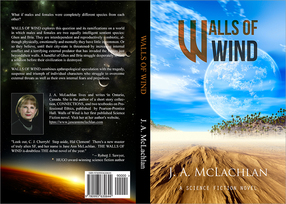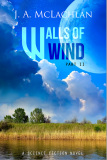There are success stories - and statistics of failures - for both routes, so deciding which route will lead YOU to success may seem like a high stakes crap shoot.
In January I began an experiment. I sent my completed historical fiction novel to my NY agent, Carrie Prostritto, whom I had recently signed with, and I self-published a science fiction novel. I decided to analyze the results of both routes to publication for timing, personal satisfaction and financial gain. To learn more about how I set up this experiment read my original post, An Experiment in Publishing.
The early results of this experiment are given in the three posts under the category 'publishing experiment'. It's now been a full year, so here are the comparative advantages and disadvantages of self-publishing and traditional publishing after a year.
TRADITIONAL PUBLISHING MODEL - My agent has received several positive comments about my historical novel, The Sorrow Stone (SS), but no purchase yet. She suggested I write another more typical historical fiction novel, and sell SS as my second book. We discussed a couple of ideas, and I began detailed research on one. I am now writing, and excited about it, while she continues to send out my first novel.
SELF-PUBLISHING MODEL - Meanwhile my self-published science fiction novel, Walls of Wind (WoW), is steadily increasing in sales each month. I am now selling 40+ e-books a month and receiving 4- and 5-star reviews from readers all over the world. In order to build on this base I wrote a second science fiction novel, called The Occasional Diamond Thief. The most exciting development here is that while at I was speaking at a conference (part of marketing WoW) a publisher became interested and bought the print rights to The Occasional Diamond Thief.
,
Timing: Still no sale on the traditional route, despite my agent's efforts. And I will be writing another book with no guarantee that it will be published, either. This is not, I believe, reflective of my agent, who is excellent, or my book, which continues to receive favorable comments, but of the current conservative attitude of publishing houses.
As for the self-published route, sales are increasing as I learn more about marketing, and I know my second SF
book, The Occasional Diamond Thief, will be published electronically by me and in print April 15 (Canada) and May 15 (USA).
Personal Satisfaction: Two or three publishers my agent sent SS to let her know they loved the story, or loved my writing style, but their marketing department had reservations - they would like to see something else by me. This makes me feel a bit like a kid in school trying to guess the answer the teacher wants. But working with an agent to determine my next project was satisfying, and I am optimistic that this next one will sell.
As for self-publishing, well it did lead to an offer by a traditional publisher - EDGE Science Fiction and Fantasy Publishing. Although this is the goal of some self-published authors, I find so many aspects of self-publishing satisfying that I chose to retain the e-rights and self-publish the e-book. By doing so I have unintentionally added a third twist to this experiment: the hybrid book, which is jointly self- and traditionally-published. It will be interesting to see whether that is the best route of all.
Financial Gain: While there is a financial gain in selling 40 e-books a month, marketing, especially live marketing such as speaking at conferences and book tours, (which is necessary to stop being an unknown author), more than wipes out any financial gain. But whatever route you take, you will have to invest in your future if you are serious about writing as a profession. The advantage to self-publishing is that it gives you a book, proof that you have something to speak about when you offer to speak. It's a door-opener now, not a door closer, thanks to those self-published authors who have really made it.
In conclusion, both models have a lot to teach an aspiring author. The years I spent honing my writing and story-telling skills while I was receiving feedback and rejections from agents and traditional publishers made me a better writer. Self-publishing required me to learn all I could about marketing my books - there's no one else to do it for you when you self-publish - so I gained the marketing skills that are, in fact, essential no matter which route you take. And that combination of writing AND marketing skills led to the sale of the print rights of my third book in this experiment. The publisher bought me, not my book: an author who can get 5-star reviews on her self-published book AND who knows something about how to sell the books she writes.
Success? We shall see. I certainly haven't hit the big-time (or even the middle rung on the ladder to success), but I feel like I'm definitely going in the right direction, and I'm much closer to reaching at least moderate success than I would be right now if I was still only following the traditional route. But who knows? My third book, a hybrid outcome of self-publishing, may take off. Or it might not. My next historical fiction, developed with suggestions from my agent in the traditional route, may be the object of a publisher bidding war. Or it might not. We'll have to wait to see which route is successful.
But I can say for sure right now that I am much happier juggling three balls in the air, and far less frustrated, than I was when I was only pursuing the traditional route. And it's likely that success in any route will increase the chance of success in the other routes.





 RSS Feed
RSS Feed
